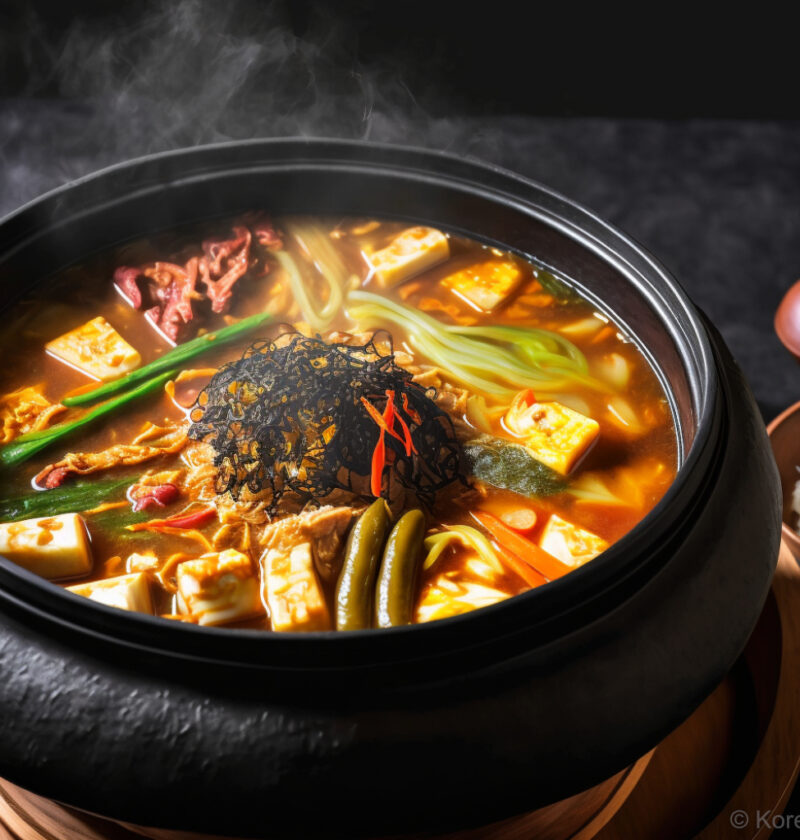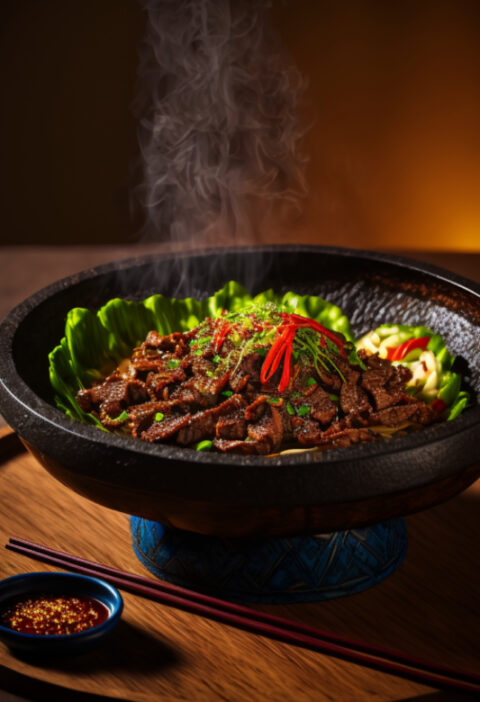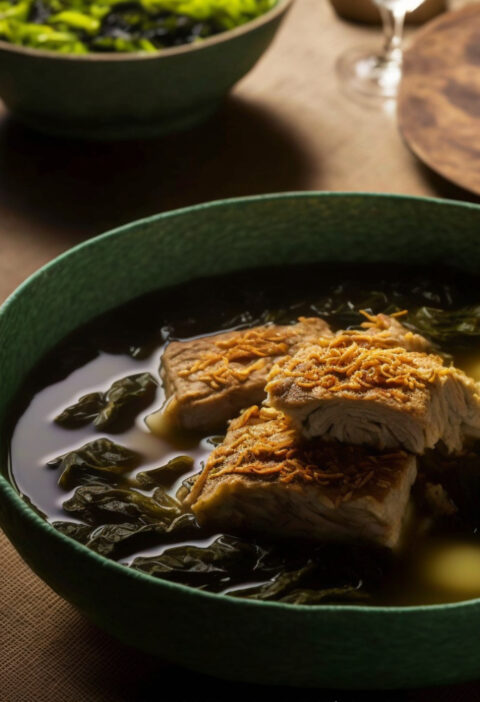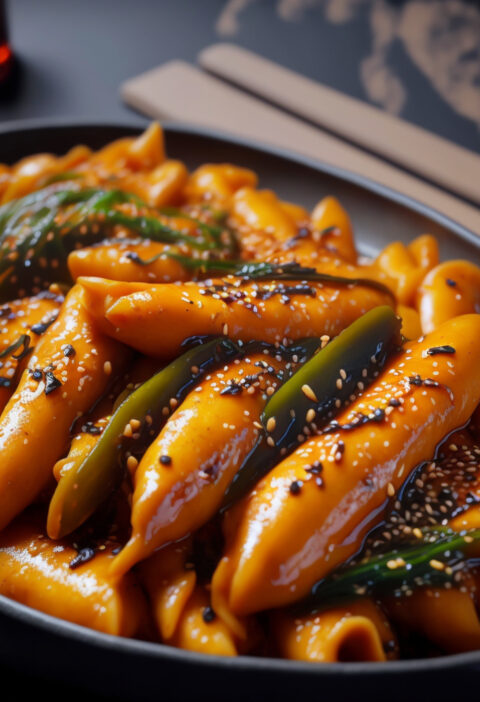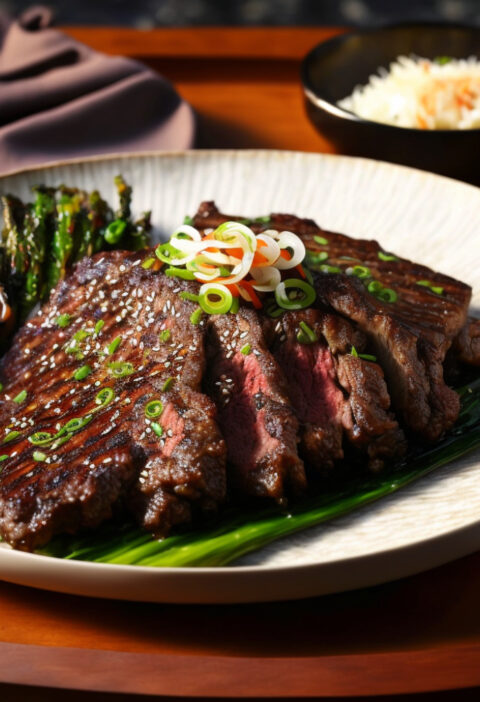What is Doenjang-Jjigae (Fermented Soybean Paste Stew)?
Doenjang-jjigae, also known as fermented soybean paste stew, is a Korean dish made with doenjang (fermented soybean paste), vegetables, and often a protein such as beef, seafood, or tofu. The ingredients are simmered together in a pot to create a stew.
Doenjang-jjigae is a staple of Korean cuisine and is often enjoyed among a group. It is a filling dish, with a rich and complex flavor. Doenjang-jjigae is also a nutritious and healthy option, as the fermented soybean paste is rich in probiotics and other beneficial nutrients.
Doenjang-jjigae is typically served with a bowl of rice and a variety of banchan (side dishes) and is often accompanied by condiments such as kimchi and ssamjang (a spicy dipping sauce). It is a delicious and satisfying choice for those looking to enjoy a hearty and flavorful Korean meal.
How To Make Doenjang-Jjigae
Ingredients
- 1 cup doenjang (fermented soybean paste)
- 1 large onion, quartered
- 1 large carrot, peeled and cut into 2-inch pieces
- 1 medium zucchini, cut into 2-inch pieces
- 2 stalks green onions, cut into 2-inch pieces
- 2 cloves garlic, minced
- 1 tablespoon gochugaru (red chili flakes)
- 1 tablespoon gochujang (red chili paste)
- 1 tablespoon soy sauce
- 1 tablespoon sugar
- 1 teaspoon black pepper
- 6 cups water
- 1 cup tofu, cut into 2-inch pieces (optional)
- 4 ounces perilla leaves (optional)
Instructions
- Place the doenjang, onion, carrot, zucchini, green onions, garlic, gochugaru, gochujang, soy sauce, sugar, black pepper, and water in a large pot. Bring the mixture to a boil over high heat.
- Reduce the heat to medium-low and simmer the doenjang-jjigae for 30-45 minutes, or until the vegetables are tender.
- Add the tofu to the pot and continue to simmer for an additional 5-10 minutes.
- Add the perilla leaves to the pot and simmer for an additional 5-10 minutes.
- Serve the doenjang-jjigae hot, garnished with additional green onions and perilla leaves, if desired. It’s typically served with a side of rice and other side dishes, such as kimchi or pickled vegetables.
What To Do With Leftovers?
If you have leftover doenjang-jjigae, or if you’re looking to meal prep for the week ahead, it’s important to know how to properly store the stew to ensure that it stays fresh and delicious.
One of the key things to consider when storing doenjang-jjigae is the type of container you use. It’s best to use a container with a tight-fitting lid to help prevent any spills or leaks. Glass or ceramic containers are a good choice, as they are airtight and will keep the stew fresh. Avoid using containers made of metal or plastic, as they can react with the doenjang and affect the flavor of the stew.
Once you’ve chosen a suitable container, it’s important to let the doenjang-jjigae cool completely before transferring it to the container. Hot food can cause plastic containers to warp or melt, and can also increase the risk of bacterial growth. If you’re in a rush, you can transfer the stew to a large bowl and place it in the refrigerator to cool more quickly.
When storing doenjang-jjigae in the refrigerator, place it in a spot that is away from any raw meat or other foods that could potentially contaminate it. The stew will keep for up to five days in the refrigerator, so it’s a great option for meal prep or for enjoying leftovers throughout the week.
If you’re looking to freeze doenjang-jjigae, it’s important to use a container that is suitable for freezing. Again glass or ceramic containers are a good choice, as they won’t crack or shatter in the freezer. Be sure to leave enough headspace in the container to allow for expansion, as the stew will expand as it freezes. Doenjang-jjigae will keep for up to three months in the freezer, so it’s a convenient option for those looking to have a tasty meal on hand at all times.
Whether you’re storing doenjang-jjigae in the refrigerator or the freezer, it’s important to follow these guidelines to ensure that the stew stays fresh.

